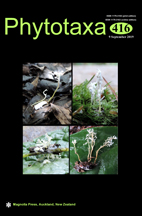Abstract
Thyrostroma ephedricola, isolated from Ephedra equisetina from Uzbekistan is introduced as a new species and a new combination, Thyrostroma jaczewskii (B. Sutton) is proposed. Both species are characterised by sporodochial, punctiform conidiomata, and brown cylindrical to subcylindrical, 1–3-septate conidiophores, cylindrical, clavate, or ellipsoid to pyriform brown conidia. Phylogenetic reconstruction based on analyses of ribosomal DNA (ITS, LSU and SSU regions) of Thyrostroma species, strongly supports the recognized taxa as a monophyletic group. The introduction of the new species is supported by both morphological and molecular data.

